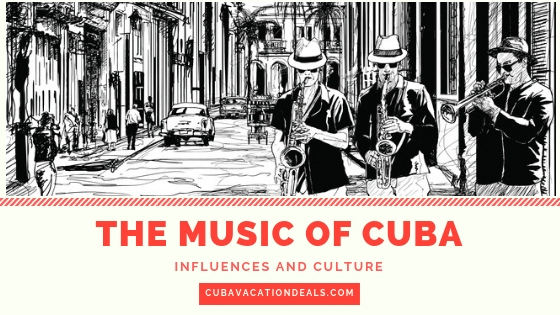
The Music of Cuba
Passionate, rhythmic music and dancing are virtually synonymous with Cuban culture. Here are some of the main genres of Cuban music that have gained international notoriety and influenced other popular genres around the world.
Rumba
Heavily influenced by the slave trade in Cuba, the rumba emerged in the mid-19th century as a way for slaves to stay connected to their African roots. The rhythmic rumba is a fusion of the African drumming and dancing of the slaves and the Spanish flamenco-style music of their colonizers. Rumba started as a form of passionate self-expression against the social problems of the times. Rumba music typically consists of conga drums, claves, and a tres guitar and is accompanied by rhythmic, expressive dancing. The three main styles of rumba music are the sensual yambu which dates back to the colonial period; the columbia which is the fastest and most African-influenced; and the most popular style of rumba music-- guaguanco.
Bolero
Romantic and melodic, Cuban bolero music is all about love. Originating in Spain as a slow tempo dance accompanied by castanets, guitar, and tambourines, Cuban bolero music evolved in the late 19th century to include conga drums and claves, infusing it with Cuban energy. "Tristezas" by Jose Pepe Sanchez is widely considered to be the first bolero written. Cuban bolero music spread throughout the island and spread to Mexico and Latin America as well.
Son
One of Cuba's most popular and influential musical genres is son. First appearing in the late 19th century, son is a call-and-response style of music that was based off the African Bantu tradition. The lyrical son music functioned as a way for locals to spread news throughout the countryside. Early son music consisted of claves, maracas, and guitar, and it later expanded to include bongo drums and a tres.
Timba
Timba music has a fast tempo and a strong Afro-Cuban influence. Timba is a lyrical, folkloric style of music that blends the local culture and beliefs with those of the African diaspora. Timba is heavy on drums and features a call-and-response vocal pattern similar to son. The rhythmic beats of timba music are reminiscent of Cuban rumba music, with a blend of other rhythms including reggae and hip hop rhythms.
Nueva Trova
Cuban music has always been heavily influenced by its social climate. After the Cuban Revolution of 1959, almost all aspects of life became controlled by the Communist government, including musical performances. In the decades following, nueva trova developed as a form of self expression and political protest of the turbulent times. One of the best known Cuban songs, "Guantanamera," is a nueva trova song set to the lyrics of the famous Cuban revolutionary and poet, Jose Marti.
Jazz
The origin of Afro-Cuban jazz dates back to the early 20th century. Cuba abolished slavery in 1886 and many Cubans migrated to New Orleans. With this, a cultural exchange took place between the island and New Orleans that included musical instruments and styles. Fusing Latin clave-based rhythms with jazz harmonies and improvisation, Cuban and American musicians began collaborating in the mid 20th century, namely Charlie Parker and Buddy Rich with Machito, and Dizzie Gillespie with Chano Pozo. Cuban jazz music exploded in the 1950s-60s with artists such as Tito Puente, Cal Tjader, and Mongo Santamaria.
Salsa
This world famous dance music is heavily influenced by Cuban son, cha-cha-cha, and mambo, as well as American jazz. Salsa music and dancing emerged from New York City in the 1960s as a result of previous decades of cultural exchange by Afro-Cuban artists such as Machito and Tito Puente. Salsa music is typically comprised of guitar and Afro-Cuban percussion, such as claves, and is also known to incorporate elements of rock, R&B, and funk.
